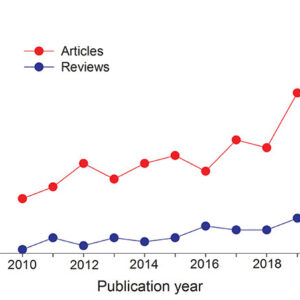
Features
Silicon nutrition of hydroponic crops
Element shown to have positive effect in mitigating plant stress, improving resistence
October 2, 2023 By Dr. Muhammad Tahir Rashid and Dr. Mohyuddin Mirza
 A diagram outlining the beneficial role the element Silicon plays in provindg nutirtion to some plants. Increasing evidence in the literature shows that this metalloid is beneficial to plants, especially under stress conditions.
A diagram outlining the beneficial role the element Silicon plays in provindg nutirtion to some plants. Increasing evidence in the literature shows that this metalloid is beneficial to plants, especially under stress conditions. The second most abundant element on Earth is silicon (Si) after oxygen, and in many soil solutions (the liquid component surrounding plant roots) soluble Si is present, as silicic acid (H4SiO4) in roughly the same concentration as many of the mineral ions we consider important such as potassium and calcium. Plants are adapted to readily use this Si and it is possible for some species to accumulate levels up to 10 per cent of their dry matter.
Research has demonstrated that silicon is one of the most beneficial micro-elements for several plants. Silicon has not yet been considered as essential in plant nutrition, however, the essentiality of Si for plants has been the subject of a long debate dating back to the 19th century. However, its classification as a beneficial element has been recognized for more than 50 years and it is now reasonably well established that Si is essential for plants. Silicon mediates the acquisition, uptake, and translocation of nutrients including nitrogen, phosphorus, potassium, calcium, magnesium, sulfur, iron, zinc, manganese, boron, chlorine, and nickel under both deficiency and excess conditions.
The past decade has seen a considerable increase in knowledge of the role of Si in plant biology and agriculture, as illustrated by the rapidly increasing number of both research and review articles (Jelena Pavlovic et al, 2021).
Despite not being a common ingredient in hydroponic recipes, several beneficial effects of Si have been demonstrated in hydroponic systems. The use of Si as a nutrient in plants has shown a positive effect in mitigating environmental and pathogenic stresses. Increasing evidence in the literature shows that this metalloid is beneficial to plants, especially under stress conditions. Indeed, Si alleviates the toxic effects caused by abiotic stresses, e.g., salt stress, drought, and heavy metals etc. Additionally, Si ameliorates the vigour of plants and improves their resistance to exogenous stresses. The beneficial role of Si in plant nutrition is very well explained in this diagram (top right) adopted from Szilvia Kovács et al (2022).
What commercial formulations are available for use?
- Potassium silicate K2SiO3 has been available for longtime commonly called water or liquid glass. It is made by combining potassium hydroxide with silica and that is why it is a highly alkaline in nature. The water content may vary in different formulations. It has 50 per cent potassium, 18 per cent silicon and 31 per cent oxygen. This is important to know when we present a calculation on using silicon a part of the nutrient solution.
- Silamol® is a concentrated form of available liquid Potassium Silicate, which forms [Si(OH)4] upon dilution, approved for use on greenhouses crops and domestic potted plants, to alleviate abiotic stresses such as water deficiency, Cadmium, Manganese and Aluminium toxicity stress, as well as Phosphorous deficiency stress.
- Freshnaal is another source of silicon sprayed @100 ppm SiO2 on cereal, oilseed crops and fruits for anti-lodging, anti pod shattering, and shelf life, respectively.
- Some commercial soilless growing media are being promoted with silicon incorporated in them.
Using potassium silicate as part of fertilizer program?
How to use these formulations of silicon is the most commonly asked question. Also, how frequently it should be applied. In the studies conducted by the authors, its frequency depends on crops being grown. For example, with seedless cucumbers we supplied 100 ppm of silicon dioxide from potassium silicate with every watering. Cucumbers is a “scooper” of silicon from the nutrient solution and has to be applied constantly. Major points to consider are:
- Potassium silicate has a pH of >10 and thus should not be mixed with other nutrients in two stock tanks, that is calcium nitrate and all other nutrients tank.
- On the adjacent page, a set up from a cucumber grower is shown which uses potassium silicate. Three injectors are used, one for calcium nitrate, second for NPK, Mg and trace elements and third for potassium silicate.
- pH is adjusted in line and then all nutrients are mixed in the holding tank and then delivered to the plants.
- Some growers inject potassium silicate calculated at 100 ppm of SIO2 and inject into the storage tank. From that point the high pH water goes into an injector which adjust the pH down to 6.0 and then other fertilizers are taken up in line.
Are there any plant signals to guess possible silicon deficiency?
Yes, the authors have noted some signals with cucumbers in greenhouses.
Left: No silicon added, note the leaf is not erect as if no strength. Right: An erect leaf with proper expanded leaf. This was a case where a grower was feeding 100 ppm of SIO2 from potassium silicate and then ran out of it. Then started again feeding it and leaves became erect again.
Cucumbers fruit also show white silicon deposit on their surface when plants have an adequate supply of silicon.
Concluding remarks
The benefits of using silicon are well documented both in field and greenhouse crops. Growers can benefit by using it properly and regularly as part of their nutrient management program.
Print this page
